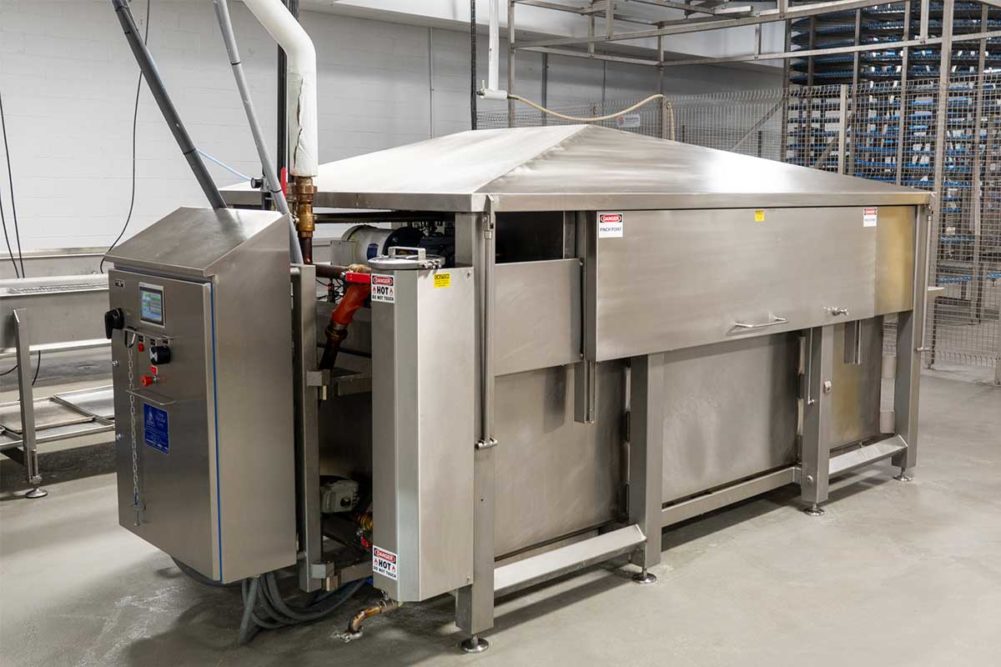Well-maintained equipment will prolong the life of frying oils by ensuring that they stay at the right temperature and machinery is working well.
“Producers can keep equipment working optimally by having a good, planned maintenance program and trained operators,” said James Padilla, director of product development, processing, Heat and Control. “We see many producers pushing their equipment until something breaks, which then creates significant downtime to repair, along with stressing other components creating unplanned failures.”
While it’s important to follow OEMs’ recommended maintenance schedules, bakers should also tailor their maintenance plans to the products they are running.
“Proper fryer cleaning and maintenance is important because it negatively impacts energy absorption and frying quality,” said Nicola Menardo, president of TP Food Group — North America Inc. “For instance, dirt accumulating on heat exchange sections reduces the fryers thermal efficiency, while the presence of water in the frying pan at the end of a cleaning cycle accelerates hydrolysis once fryers resume operations besides creating potential safety hazards.”
For gas-fired fryers, producers should avoid organic buildup on heating tubes.
“It will burn onto the tube and become black carbon, like the black carbon you see on a cast-iron skillet,” said Damian Morabito, chief executive officer of Topos Mondial Corp. “That becomes like an insulated sweater on the tube. It doesn’t allow for the heat transfer to the oil.”
The buildup can be avoided with good cleaning daily as the accumulation of fines causes the problem.
“If you drain, filter and clean the fryer and its oil every day, your tubes stay cleaner,” he said. “Then at the end of the week, you do what we call a boil-out, which is adding a cleaning solution, particularly a caustic soda, then boil your fryer. It cleans off that carbon.”
After rinsing, operators can add some white vinegar, an acid, to bring the pH back to neutral, Mr. Morabito said. A neutral pH of 7 is ideal for fryers.
Fryers are designed today with sanitation in mind so that water and cleaning fluids drain out of the system completely, following the same path as the oil, said Arnaud Jansse, applications engineer, product development, TNA solutions.
“Equipment that has been developed with sanitary design in mind, with smooth surfaces, no blind spots and no areas where product and microorganisms can accumulate, makes a huge difference to food safety during the frying process,” he explained.
Mr. Morabito said Topos Mondial’s fryers come with an “oil gun,” which is basically a hose that allows operators to use filtered oil to guide sediment that has collected at the bottom of kettles into filters when the oil is drained for cleaning.
“We’re using the hot oil to do the rinsing and catching it all in our filter system, which greatly streamlines and simplifies the daily cleaning and filtering of oil,” he said. “We’re not pushing it down a floor drain.”
With much of the equipment in industrial bakeries, the longer producers can run one item, the better the equipment will perform.
“With respect to Moline systems and especially our larger donut system, you really are best served to run for longer, extended periods of time,” said David Moline, vice president of sales and marketing, Moline Machinery. “Changeovers can lead to inefficiencies and the longer you can run, the more you can stabilize the system and ensure it’s going to run at very high efficiencies for long periods of time.”
Mr. Padilla said one of the most common errors is when producers run fryers at capacities below the fryer’s input rate.
“This results in longer oil turnover rates — the hours it takes to consume the entire oil volume and to replenish it with new oil,” he said. “Replenishing the fryer with makeup oil at a frequent rate keeps the oil quality in balance and provides for the best method of oil quality efficiency.”
Keeping oils at the right temperature for frying without getting too hot will keep them from degrading.
“Most customers are frying between 365°F and 375°F,” Mr. Moline said. “We want to keep our heaters as close to the temperature as possible but still provide adequate response time if you need to change temperatures.”
And as consumers demand more healthy options, bakers and snack makers are responding with more healthful ingredients, but that can require some adjustments to machinery.
“One critical element to consider when selecting a new oil is its smoke temperature, which can often be lower than that of conventional oils,” Mr. Jansse said. “Cooking temperatures must be adjusted accordingly to facilitate the use of these oils, and as a result PLC and HMI controls are increasingly being incorporated into frying systems to allow producers to accommodate different oils or raw materials.”
This article is an excerpt from the August 2023 issue of Baking & Snack. To read the entire feature on Frying, click here.





